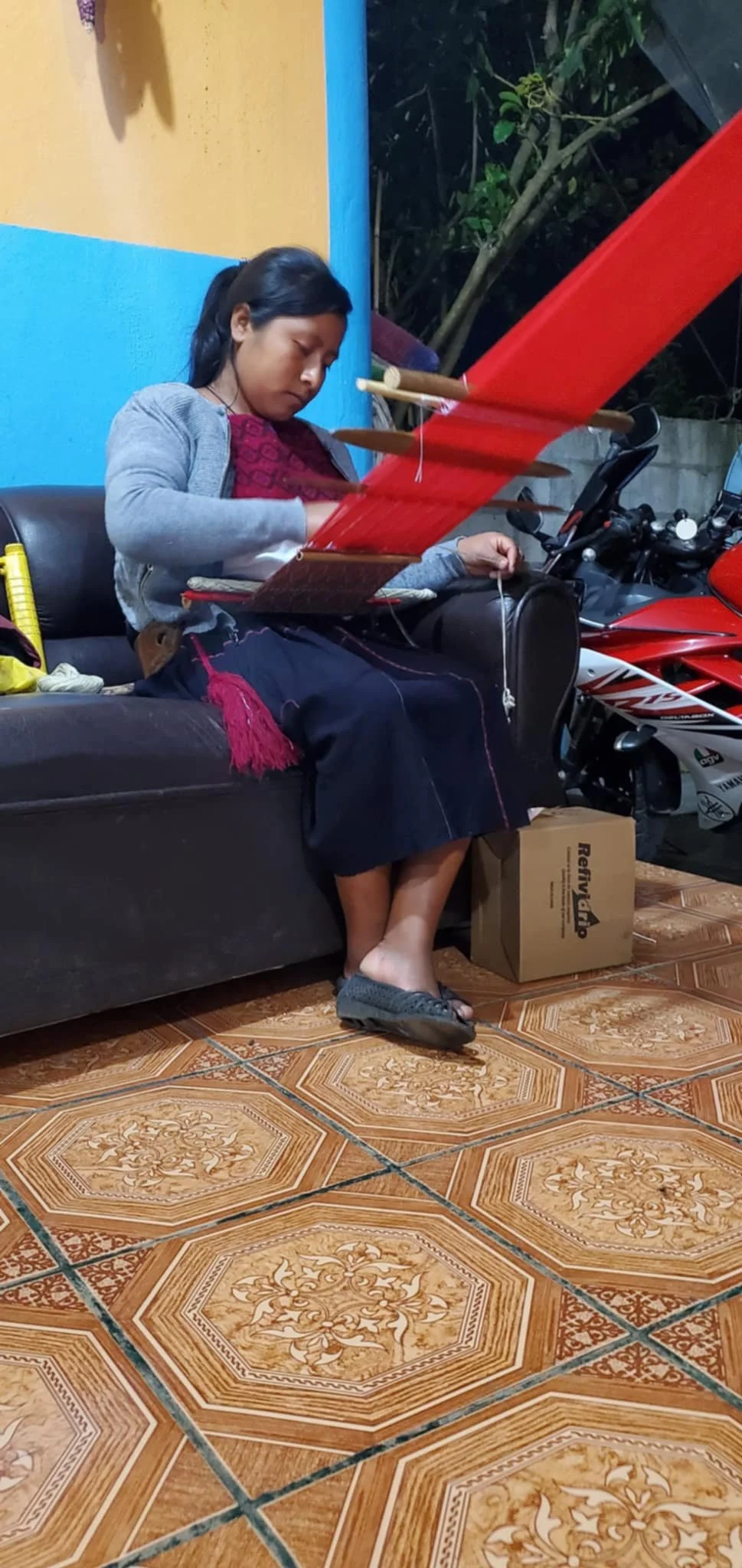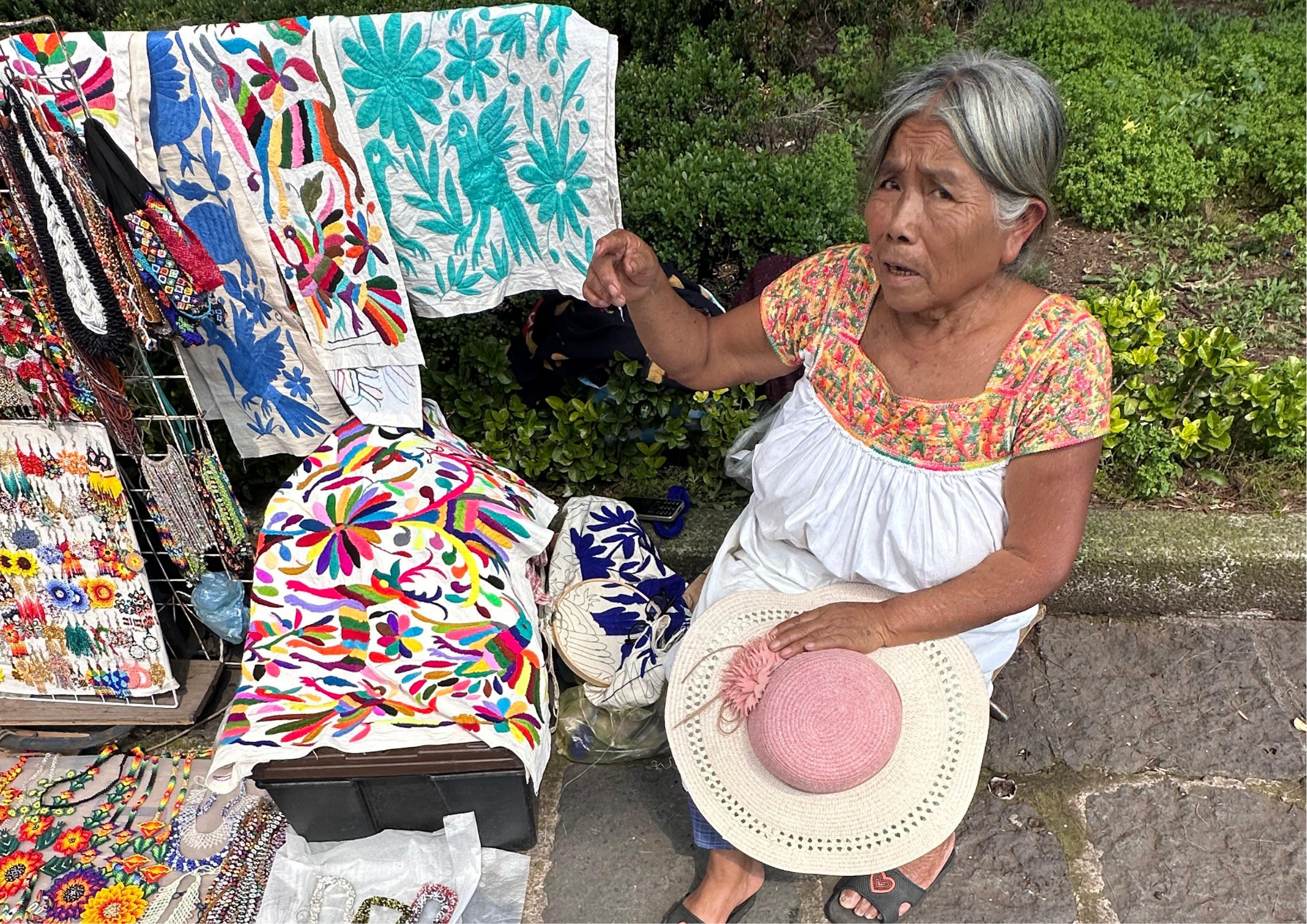Meet the Artisans
Flor, backstrap loom weaver from Chiapas.As proud Mexicans, we started Rooted in Mexico to share with the world the beauty of the pieces created by some of the most talented artisans across our country, those who keep traditions alive and honour centuries of ancestral knowledge, some rooted in pre-Hispanic times.
Across Mexico, each region and Indigenous community has its own artistic language, expressed through distinct materials, colours and techniques that tell the story of their land and heritage.
Each creation carries the unique essence, soul and story of its maker.
Celebrate with us the artisans who give life to Mexico’s cultural heritage ❤️
Queretaro, Mexico
Octavio Flores, artisan specialised in rattan weaving
Octavio Flores, an artisan from Tequisquiapan, Querétaro, has dedicated the last seven years to the art of rattan weaving, though his family’s connection to this craft goes back much further. Working with natural rattan fibres, each of his creations takes a few hours of careful weaving, plus up to two days for preparation and finishing.
Octavio first learned by watching his father, whose shop is still lovingly cared for by the family in the heart of Mexico City. Today, he continues the tradition from his own workshop in Tequisquiapan. For Octavio, weaving is a way of honouring his father’s memory and celebrating his life’s work. His favourite creations are sunflowers — his father’s beloved flower.
Every time you buy one of Octavio’s pieces, he hopes you will remember:
“Que lo hermoso de las cosas, reside en lo fugaces que son. La flor más bella jamás verá dos primaveras, pero algo no siempre es bello porque dure.”
“The beauty of things lies in their fleeting nature. The most beautiful flower will never see two springs, but something does not need to last forever to be beautiful.”
Puebla, Mexico
Moisés, Otomí beadwork artist
Moisés, an artisan from San Pablito, Puebla, has been weaving beadwork since he was seven years old, taught by his mother and inspired by his family’s deep-rooted Otomí traditions. For the past twelve years, he has dedicated himself to his craft in San Pablito, a community known for preserving Indigenous artistry and language. Working with chaquira beads and plastic string, each necklace he creates involves three meticulous steps and takes around four to five hours to complete. Every piece carries not only the patience and skill of his hands, but also the heritage of his family and culture. Through his work, Moisés continues a tradition passed down through generations.
What Moisés wants you to remember:
“Saber valorar el trabajo y que conozca las tradiciones mexicanas. Apreciar el trabajo que hemos dedicado, tiempo, paciencia.”
“We want people to value our work and learn about Mexican traditions, and to appreciate the time, patience and dedication we’ve put into it.”
Maria Paula, Otomí beadwork artist
María Paula, an artisan from San Pablito, Puebla, has been creating beadwork for as long as she can remember, weaving with chaquira beads and plastic string in the traditional Otomí style. With more than forty years of experience, she is the root of her son Moisés’s artistry, having taught him the techniques and values that continue to guide his work today. Most of our communication with María Paula is through Moisés, as she mainly speaks Otomí — the language of her heritage and community in San Pablito. Her necklaces embody patience and vibrant colour, carrying forward a tradition that has lived in her family for generations.
Oaxaca, Mexico
Maria Antonieta & Jorge, traditional Oaxacan plastic weaving
María Antonieta and Jorge, artisans from Oaxaca, have been hand-weaving for the past six years. What began as a way to earn extra income soon became their craft and passion. Working with recycled plastic and wire, they create accessories and kitchenware using a traditional Oaxacan technique known for its strength and vibrant design. Each piece involves a three-step process and can take from a full day to several, depending on its size and complexity. Through their work, María Antonieta and Jorge hope people will value handmade art and treasure the time and dedication that each creation represents.
Oliva, traditional Oaxacan synthetic and natural fibres weaving
Oliva, an artisan from the Mixteca region of Oaxaca, has been weaving for more than thirty years. This craft has been passed down through generations in her family, and today, they all work together, each specialising in different types of handwoven products. From accessories like tenates — our most popular pieces, lovingly known as “treasure keepers” — to jewellery and kitchen items, every creation involves around seven careful steps. These weaving techniques are part of Mixteca culture, and each piece you take home carries with it a piece of their heritage and the spirit of their community.
Michoacán, Mexico
Zeferino, artisan specialised in chuspata weaving
Zeferino, an artisan from Puácuaro, Michoacán, has been weaving “chuspata” (a natural reed) for over thirty years. This craft has been passed down through generations in his family, preserving a tradition deeply rooted in the region. From his workshop, Zeferino creates extraordinary bags in countless animal shapes and designs, as well as beautiful pieces of kitchenware. Each creation involves three steps and takes between one and two days to complete. Through his work, he hopes people will appreciate what is made by artisan hands and recognise the dedication and skill behind every piece.









